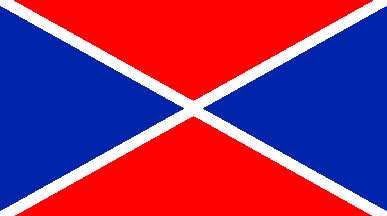On Nov. 23,
1978 AM radio stations in Patria moved from 10 kHz to 9 kHz spacing in
accordance with frequency re-assignments mandated by the International
Telecommunications Union (ITU) Geneva
Frequency Plan for medium
wave stations in all regions of the world except North and South America .
Before this
day in 1978, all AM stations in Patria transmitted on frequencies 10 kHz apart
that ended in a zero (as they still do in Canada ,
the US and the rest of the Americas
Stations continued to broadcast on their old frequencies
until midnight Nov. 22; the change was to be made between 0000 and 0530 PLT
(Patrienish Local Time) Nov. 23. While many stations made the frequency change
virtually seamlessly with only a brief silent period or even none at all, the
move did not go well on some of Patria’s AM stations. Some stations remained
off the air or still on their old frequency well into the morning drive time
hours of Nov. 23. Others – mainly those who used the frequency move as an
opportunity to install new transmitter towers – failed to shut down the old transmitter in a
timely matter, broadcasting for much of the day and even into Nov. 24 on both
their old and new frequencies, often causing an echo or heterodyne splatter
(also known in DX loggings as “slop”) since the old and new frequencies were
usually only a few kilohertz apart.
 |
| PMC, the "full service", "total information" blowtorch in Patria's capital city, moved from 850 to 846 kHz on Nov. 23, 1978. |
The impending frequency moves were well publicized in the
weeks leading up to Nov. 23, both on the air as well as in newspaper, outdoor
billboard and transit vehicle ads. Listeners were told to “fine tune” their
radios and adjust their car radio push buttons as they woke up on the morning
of the 23rd. Forty years ago, virtually all AM radios were of the
analog dial variety. A few odd kilohertz did not make much difference for the
average listener. Even most MW DXers in 1978 did not have receivers with
digital frequency readout that could be tuned by punching in a keypad rather
than spinning a tuning knob. Of course, many on-air promos, IDs and slogans had
to be changed. On the Castoropolis Centurions (PHL) flagship, the play-by-play
commentator had to correct himself for the first hockey game played after the
frequency move: “as you look at your PMC 850...or rather 846... radio dial, the
Centurions will be moving from right to left”. Top 40 blowtorch POKX was no
longer the “Nifty 650” but “Great 648”. But the new slogan was not used for
long as POKX’s days as Patria’s Top 40 blowtorch were numbered. By the
mid-1980s they became a right-wing all-talk station after a brief and
unsuccessful transition from Top 40 hits to Oldies. But forty years ago AM
radio had not yet lost the battle of the airwaves to FM. The spectrum between 530 and 1600 kilohertz was still dominant and relevant in markets large and small, both in the US
 |
| PMBC-1150 (moved to 1152 kHz) used to be the flagship of the Mutual Broadcasting Corp. of Patria. In the 1970s their full-service format went head-to-head with PMC. Now all-sports and Jim Rome. |
Generally the frequency change was only a few kilohertz up
or down from the old 10 kHz channel to the nearest 9 kHz channel. A number of
stations on frequencies ending in zero did not move if the frequency was a
multiple of 9, such as 540, 1080 or 1350 kHz. In Patria’s capital and largest
radio market Castoropolis, the AM dial looked like this on Nov. 23, 1978. Old
frequencies are in [square brackets], formats 40 years ago are noted if they
have flipped since 1978.
PCRC, 531 kHz (ethnic, variety, far-left talk) [530]
PCGE, 595 kHz (Hindu) [590] (1978: EZL, adult contemporary)
POKX, 648 kHz (right-wing talk) [650] (1978: Patria's major
Top 40 rocker)
PHTN, 792 kHz (Ramrajyavani-II) [790] (1978: classical, “fine
arts”)
PMC, 846 kHz (news, sports, talk, “Full Service”) [850]
PRCC, 918 kHz (Ramrajyavani-I) [920]
PTE, 1017 kHz (Hindu) [1020] (1978: “ethnic”, long before
Dharmic Revolution)
PTCN, 1071 kHz (Ramrajyavani-III) [1070]
PMBC, 1152 kHz (all sports, Jim Rome) [1150] (1978: news,
talk, some MoR/EZL)
PHN, 1251 kHz (liberal-left talk/sports) [1250] (1978: news,
talk, focus on Caesarea )
PVOG, 1350 kHz (Christian, brokered ethnic) [1350]
PKBY, 1404 kHz (nostalgia/MYL) [1400] (1978: T40,
head-to-head with POKX)
PECR, 1512 kHz (business news) [1520] (1978:
oldies/easy-listening)
PGBS, 1557 kHz (ethnic) [1560] (1978: C&W)
 |
| Ramrajyavani (the Voice of Patria), like CBC/Radio-Canada, has networks of AM and FM stations across Patria. |
Ramrajyavani-I : popular music, news, information,
documentaries (cf. CBC Radio One or ABC Radio National). Ramrajyavani-II: Hindu devotional music,
mostly Sanskrit. Ramrajyavani-III: all-news.
Ramrajyavani-IV, V: classical music, drama, poetry, arts (FM only).
Note that the only station in Patria’s capital city that
remained on the same frequency was PVOG-1350, “Patria’s Voice of the Gospel”.
Yes, you can actually find such a format in Patria!
